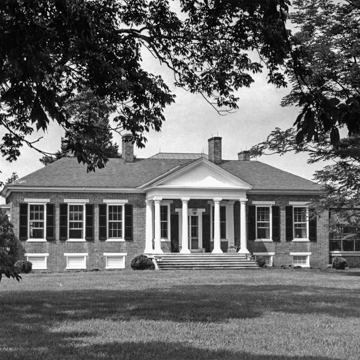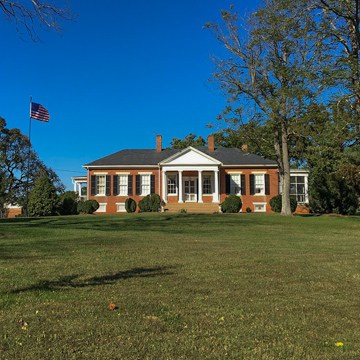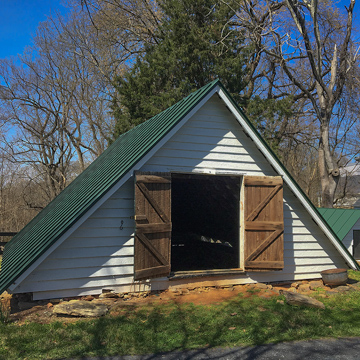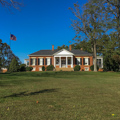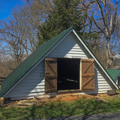Once part of the huge Clifton tract, Ampthill was conveyed to Randolph Harrison, who asked his friend Thomas Jefferson for a set of house plans. In 1815 Jefferson complied with a plan and elevation for a one-story, six-room house. Harrison did not build the brick section of Ampthill until twenty years later and apparently did not follow Jefferson's plans. However, since Jefferson's plans have been lost, no one knows how they compare to the present building. The house is distinctly Jeffersonian in massing but, following the change in fashion, its detailing is more Greek than Roman Revival. Behind it is an eighteenth-century frame section that was remodeled, probably when the brick section was built. Joined by a hyphen to the front section, the two-story frame portion peeks over its roofline. The Jeffersonian section is long and low, only one room deep and one story above a raised basement. Its hipped roof is broken by two interior chimneys. Ampthill has careful brickwork laid in Flemish bond and all its openings on the eight-bay facade have marble sills and lintels. The asymmetrical facade has a three-bay Doric portico flanked by three windows on the left and two on the right. Valentine Parrish, who built Ca Ira (CB5) and the Old Cumberland County Clerk's Office (CB2), may have constructed the brick portion of Ampthill. With the possible exception of an impressive icehouse, the outbuildings are in American bond and later than the house.
You are here
Ampthill
If SAH Archipedia has been useful to you, please consider supporting it.
SAH Archipedia tells the story of the United States through its buildings, landscapes, and cities. This freely available resource empowers the public with authoritative knowledge that deepens their understanding and appreciation of the built environment. But the Society of Architectural Historians, which created SAH Archipedia with University of Virginia Press, needs your support to maintain the high-caliber research, writing, photography, cartography, editing, design, and programming that make SAH Archipedia a trusted online resource available to all who value the history of place, heritage tourism, and learning.




















